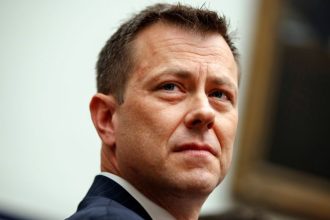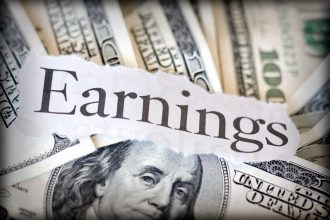Student loan borrowers, advocates and other stakeholders have been waiting for months for the Supreme Court to rule on the legality of the Biden administration’s student-debt relief plan.
The decision is likely to come this week, perhaps as soon as Thursday. Here’s what you need to know while you wait.
The cases before the court center around a plan the Biden administration announced in August to cancel up to $20,000 in student debt for a wide swath of borrowers. If the court lets the plan stand, borrowers who made up to $125,000 during the 2020 or 2021 tax years will have up to $10,000 in student-debt canceled. Borrowers who meet that criteria and also received a Pell grant, the money the government provides to low-income students to pay for school, will have up to $20,000 in student debt canceled.
How many people will the plan impact?
The White House has said more than 40 million borrowers will have some debt canceled under the plan and nearly 20 million borrowers could have their debt wiped away completely. Having the debt canceled could make a “really significant” change to borrowers’ financial circumstances, said Abby Shafroth, the director of the Student Loan Borrower Assistance Project at the National Consumer Law Center.
“For many people their student debt is their biggest debt and their biggest financial burden holding them back,” she said.
Who are the parties in the case?
Almost immediately after the Biden administration announced the plan, parties opposing the policy filed lawsuits challenging it. Two of those cases survived and made it to the Supreme Court.
In one case before the court, six Republican-led states sued the Biden administration over the plan. The other suit was brought by two student-loan borrowers, one of whom isn’t eligible for the plan and the other who only qualifies for up to $10,000 in relief. Their suit is backed by the Job Creators Network, an advocacy organization founded by Bernard Marcus, the co-founder of Home Depot and a backer of former President Trump.
What are the issues in the case?
The court is looking at whether the parties have standing, or the right to bring their lawsuits, and if the Biden administration overstepped its executive authority in issuing the debt-relief plan.
In order for the justices to move to the second question or the merits of the case, they need to find the parties have standing, or can bring their suit to court because they’re directly harmed by the policy and the court can redress the harm.
During oral arguments in February, the justices seemed less skeptical of the states’ claim to standing, though even some of the court’s conservative wing pressed the attorney representing the states on their standing argument.
The states’ claim to standing centers in large part on the The Higher Education Loan Authority of Missouri or MOHELA, a student-loan organization created by Missouri’s state legislature. The states have said that the debt-relief plan could impact MOHELA’s bottom line by decreasing the volume of loans the organization services on behalf of the federal government. The states have said that the hit to MOHELA would impact Missouri’s revenue.
Legal experts and others have questioned those claims. The Biden administration said neither the states nor the borrowers have standing to bring their cases.
On the merits, the states claim in issuing the plan, the Department of Education overstepped its authority under the HEROES Act, a 2003 law that allows the Secretary of Education to waive and modify student loans in cases of a national emergency to ensure borrowers aren’t left worse off. The Biden administration has said the Secretary of Education was within his authority in creating the plan.
How did we get here?
For more than a decade, student-loan activists have been pressuring the government to cancel student debt en masse. Over the past several years, they’ve moved the needle on debt cancellation in specific situations, including when borrowers have been scammed by their schools.
The idea of student-debt cancellation became mainstream during the 2020 presidential election, when multiple candidates for the Democratic nomination, including Biden, said they would discharge at least some student debt if elected.
How does this affect the pandemic pause on student loan payments?
Regardless of the outcome of the case, payments, interest and collections on federal student loans will resume this fall.
The agreement to raise the nation’s debt limit, negotiated by House Speaker Kevin McCarthy, a California Republican, and Biden earlier this year, requires that the Department of Education end the more than three-year freeze on student loan payments. The agency has said interest will begin accruing again in September and bills will be due in October.
What’s next for the student debt movement?
If the court upholds the debt-relief plan, the movement advocating for student-loan forgiveness will continue to push for broader changes to the college finance and student-loan system, Shafroth said.
Those include making college more affordable through federal and state partnerships that allow students to attend public college for free or at least debt free, she said.
“My hope and I think the hope of many people who have looked at these student issues is that there will be renewed energy and focus on addressing that front end issue if this cancellation program goes through,” Shafroth said.
On the back end, advocates have pushed and will continue to push for changes to the repayment and discharge systems in order to make student loans more manageable, she said. The Biden administration has been responsive to some of those efforts, she said. For example, the Department of Education is expected to release final rules some time this year on a plan that would make student loan payments more affordable and interest accumulation less punishing for many borrowers.
If the court knocks down the debt-relief plan, Shafroth and others have said they’ll continue to push the White House to discharge debt en masse some other way. In defending the debt-relief plan in court, the Biden administration has said it’s necessary to prevent a wave of delinquencies and defaults when student loan payments resume this fall.
The Consumer Financial Protection Bureau said this month that about 20% of student-loan borrowers have risk factors indicating they could struggle when payments resume. In addition, the CFPB said that more than 40% of borrowers in the sample the agency reviewed will have a new servicer when payments resume. That means many borrowers’ main point of contact when student loan bills start arriving will be different from the organization they worked with before the pause.
“It would be an absolute disaster,” to resume repayment this fall without canceling some debt, Shafroth said. “The HEROES act is one avenue that the administration identified for providing debt relief to borrowers, but there are other avenues out there. There will be tremendous pressure on the administration to make sure that they don’t call this the end.”
Read the full article here




